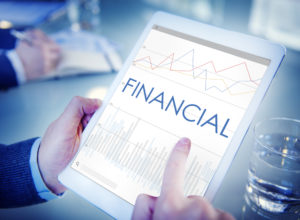By Drew Hayles
Special to the Financial Independendence Hub
When you’re young, you feel like nothing can stop you. You’re in charge of your own destiny.
Things might look different in hindsight, but don’t worry about that now. The most important thing you can do right now is set in motion a plan to achieve financial independence as soon as possible. With the means to do what you want, when you want, you’ll open doors you never even knew existed.
Before you begin in earnest, make sure you have the right digital tools and apps in your corner. These user-friendly resources all have their place in a coherent, comprehensive financial independence plan, provided you use them properly and consistently.
Perhaps you’re using a few already.
Digital Budgeting Tools: All Your Money in One Place
This list of the “best simple and free budgeting tools” doesn’t get to actual digital solutions until the third entry, when it calls out the trusty old Excel spreadsheet.
If you’re in the market for something a bit more robust and hands-off than a wall of spreadsheet cells, consider later entries like Mint or PearBudget (which, to be fair, began life as an Excel tool).
These aren’t professional-grade tools by any means, but they’re nevertheless robust enough to accommodate basic household budgeting and ensure that you spend well less than you earn. Remember to download mobile versions and link your bank accounts for automated cash flow tracking.
Automated Savings Apps: Ditch the Reminders
Tired of remembering (or forgetting) to make regular savings deposits? Take the uncertainty out of the process with automated savings apps that quietly transfer small sums to your savings accounts without any input on your end.
Tools like Digit exist wholly for this purpose. More robust online banking solutions like Chime Bank typically have built-in automated savings features that round up every debit transaction to the nearest dollar and sock away the difference
Educational Videos: DIY, But for Money
Are you a DIYer at heart? You can learn a lot from high-quality investing and financial education videos. After all, there’s no need to pay for entry-level information and strategic advice when you’ve got a YouTube account to your name. If you need help or want to learn more about specific topics, you can always go straight to the source with questions.
Lightweight Accounting Platforms for Entrepreneurs
Small business owners aren’t the only beneficiaries of lightweight accounting tools like QuickBooks and Xero. If you earn considerable freelance income or have a complex household budget with lots of mouths to feed, a free or low-cost accounting software subscription is a worthwhile investment in your personal financial health.
Most accounting platforms integrate with invoicing software and other apps that you may or may not need to keep a handle on your personal and business activities. Even if you don’t feel like your books are complex enough to warrant a subscription now, it never hurts to keep this option on the back burner. You never know when the side gig itch will strike.
Free Financial Planning Tools
Plan like a pro with free financial planning tools that offer professional-grade insight without the cost. It must be said that these tools are not meant to replace in-depth professional advice; think of them instead as diagnostic aids that can help you determine whether it makes sense to reach out to a professional. (Spoiler alert: it usually does.)
Public Financial Calculators
Reputable public agencies and organizations, like the U.S. Securities and Exchange Commission, offer a slew of free calculators and primers on common financial topics. This suite, from the SEC, has calculators covering IRA and 401(k) required minimum distributions, compound interest and savings goals, Social Security income, mutual fund analysis, 529 college savings plans, and more.
Plan Your Independence Today
If you take one thing away from this post, let it be this: setting yourself up for financial independence doesn’t have to be a solo project.
Yes, ultimately you’re responsible for the dollars-and-cents decisions you make (and don’t make). But there’s also no shortage of resources that you can tap in your quest to achieve the means to live life on your own terms. Many of these resources are free or low-cost, though they’re not necessarily suitable substitutes for professional financial planners.
Don’t wait any longer. You’re closer to financial independence than you think, but you’ll never get there if you don’t take the first step.
Drew Hayles is a freelance writer and editor based in the San Francisco Bay Area. She specializes in topics related to entrepreneurship and finance of particular interest to millennials.”



